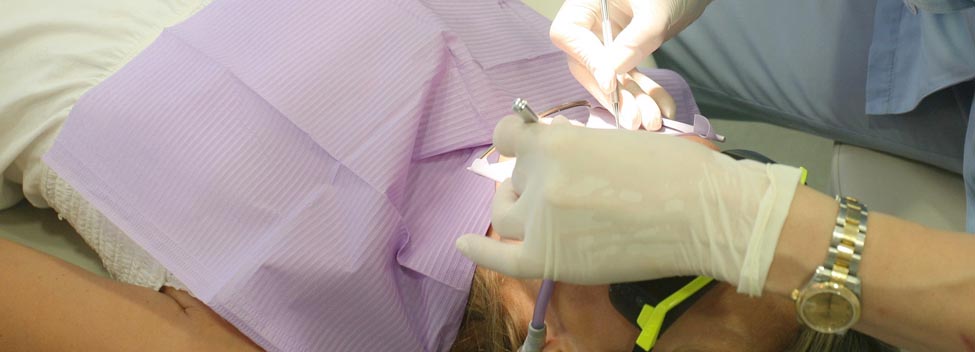
Dental insurance is similar to health insurance. A monthly premium is paid and after a deductible has been met, the insurance carrier will cover part or all of your approved dental expenses. Generally, the insurance company will pay your dentist directly, although dental indemnity plans may require you to pay all of your dental fees and then seek reimbursement from the insurance plan.
Some common dental insurance plan terms you should know:
Dental HMOs are more commonly purchased as an employer-sponsored dental plan. HMOs require you to choose a primary care dentist from the plan’s provider network and generally do not have a benefit maximum. Any dentist or dental treatment considered out-of-network is typically not covered.

Dental PPOs cost more than HMOs, but they allow you to choose from any dentist in the provider network, and will still cover some of the costs for a dentist who is out-of- network. Dental PPO plans often have a deductible that must be met and cover a percentage of each dental procedure depending on how it is classified (preventive, basic, or major).
Dental Indemnity Plans typically have a deductible that must be met, as well as an annual benefit maximum, similar to PPO plans. The positive to an indemnity plan is that you can see any dental provider without the restrictions of a network. The negative is that this plan pays a percentage of “usual and customary” charges for a procedure, which means if you go to a dentist or specialist who charges more than the “usual and customary” amount, the total you will have to pay increases.
Full coverage dental insurance provides for more than basic and preventative care. It includes major restorative care, and in some plans, orthodontic treatment. “Full coverage” does not mean that it covers the full cost for major treatments, but it can certainly reduce your costs for expensive treatments such as, implants, root canals and bridges.
Full coverage generally provides for the following:
There are 2 ways to purchase full dental coverage:
Dental insurance premiums are generally $25 to$50 per month for an individual and $50-$150 for a family. If your employer offers a dental benefit, they may pay a portion or the entire premium for you. If you are buying a plan through a private insurer or the Healthcare Marketplace, then you will be responsible for the full cost. (It is important to note: The Affordable Care Act’s premium subsidies do not apply to stand alone dental plans).

Dental discount plans provide discounted prices for dental services from participating dentists. There are no deductibles, no annual maximums, no waiting periods and no co-pays. Discount plans cost approximately $100 per year for an individual and approximately $150 annually for a family.
How much money can you save with a dental discount plan?
Depending on where you live and what type of discount plan you choose, there are 2 ways these plans can save you money:
A good dental plan has already negotiated discounted services with a network of dentists who agree to the pricing. This could save you between 10% and 60% on basic services and some major restorative procedures.
Typical dental insurance can range between $25 to $50 per month, per person. A good quality dental discount plan, can range between $10 to $15 per month.
Only you can decide which type of dental plan is best for your health and budget, however, if any of the below categories applies to you, you may want to consider a dental discount plan: